


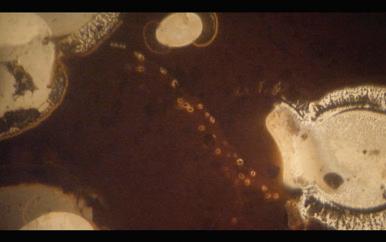



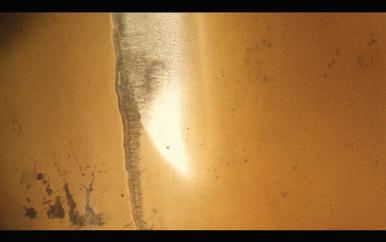
















Presidential Foreword
Cole ScottCurwood
Welcome to new students and welcome back to returning students! The University of Sydney Union exists to improve campus life and support our members. One of the ways we do this is by providing PULP magazine as a platform for student creativity.
In 2022, we hosted 95 live music events at Manning Bar including King Stingray, Rema, and Ruby Fields. We conducted satellite campus visits and meetings to understand how the USU can better support those who study there. Our members are at the heart of everything we do, and we’re excited to have had 40,000 members in 2022. In collaboration with the SRC, the USU funded and housed Foodhub — a free food pantry for all students - which has been expanded for 2023.
For this year, the USU Board has approved a budget with a massive $1.2 million in new initiatives. Several of these aim to formalise wellbeing support for everyone who participates in our Clubs & Societies Program. For example, we’ll be hosting a Clubs Conference to train, induct, and support club executives. Reconciliation, inclusion and accessibility, and student safety are important to the USU, so we’ve set aside money accordingly. Other initiatives for 2023 include vegan markets, a Festival of Creativity, and an upgrade of the audiovisual equipment at Manning Bar.

I hope you enjoy the start of the year and this latest edition of PULP magazine!
SENIOR EDITOR

Marlow Hurst
EDITORS
Nandini Dhir
Harry Gay
Ariana Haghighi
Bonnie Huang
Patrick McKenzie
Rhea Thomas
DESIGN
Bonnie Huang
Rhea Thomas
COVER
Estelle Yoon (from ‘Casse-Cou’)
The views in this publication are not necessarily the views of USU. The information contained within this edition of PULP was correct at the time of printing.
This publication is brought to you by the University of Sydney Union. Issue 05, 2022
PULP is published on the sovereign land of the Gadigal People of the Eora Nation. We pay our respects to Elders past and present, as well as Indigenous members of our creative community. We respect the knowledge and customs that traditional elders and Aboriginal people have passed down from generation to generation. We acknowledge the historical and continued violence and dispossession against First Nations peoples. Australia’s many institutions, including the University itself, are founded on this very same violence and dispossession. As editors, we will always stand the substance and practice of this magazine. Sovereignty was never ceded. Always was and always will be Aboriginal land.
Marlow Hurst Senior Editor
Hermes, the University of Sydney Union’s bygone undergraduate magazine, penned a foreword entitled “A new Hermes.” They outlined the magazine’s foundational purpose — to “encourage undergraduate literary ability” and to be “a record of University life” — and advised that none of this could be done with an insulated editorial team and limited external submissions. Without remedying these issues, Hermes could the publication was “going to the dogs” and was “dull as ditch water.”
I have good news. PULP ISSUE 05 is none of these things — it’s a vibrant display of feeling and ability from those within the University, of the University, and beyond it. Yet all the same, it is my hope and endeavour that PULP in 2023 is not hampered by insularity or repetition. So, in the words of 1923 editor A.B. Barry, “Write for Hermes PULP!”
Editors’ Note
Aaaaaaaand we’re back! After a long and much needed break, we are feeling rejuvenated and ready to provide a revitalised PULP for the new year and a new batch of potential readers.
We hope you enjoy our latest output, which features a myriad of great articles by our pool of incredibly talented contributors.
When we accept articles, we are often interested in the niche aspects of life; the beauty of everyday objects; the things people don’t see the point in covering. From Coke cans, to ceiling fans, from movie cameos to people watching, and even staring at piles of debris in construction sites. We believe everything has a purpose and deserves to be discussed, even the most mundane.
We are endlessly fascinated by the threads and connections our writers tend to make. Historical lineages of USyd theatres, ingredients in everyone’s food, the various beliefs of Mongolian shamans — we love a good tapestry vastly woven from various ideas, images and stories.
The photography and art of this issue foresees alternative futures – ones that forefront harmony and co-existence. These futures embrace both technology and natural ecology through biomorphism. Whether you can anticipate these utopian visions through imagination or through the tangible in your closest relationships,
ISSUE 05 has all of these aspects and more! And if you think you have what it takes to contribute, don’t be afraid to reach us through our email or socials.
Reach us any time at pulp@usu.edu.au.
Editorial
PAGE_8
PAGE_10
PAGE_12
PAGE_14
PAGE_16
PAGE_18

The many lives of the Cellar Theatre
How to people-watch
Ode to the ceiling fan

Remembering Nookazon
Pale blue sky
The hands that speak

PAGE_24
PAGE_26
PAGE_28
PAGE_30
PAGE_34
PAGE_40
The water of life
A diptych of art and empathy

Chambers

It’s tee time
The coke cans article

Martin Gregory and Anthropoid

CONTENTS
PAGE_44
Sydney will be nice
PAGE_62
MSG for me and you
PAGE_50
The devils in the details: The outrageous story behind Space Jam: A New Legacy’s most bizarre cameo
PAGE_56
Mollah and It’s myself that I crave



PAGE_64
Sydney library launches ‘Dark Web 4 seniors’ to bridge digital skills gap
PAGE_66
PAGE_68

3vergard
The many lives of the Cellar Theatre
Words by Marlow Hurst
Way back when, before Humanitix was even a twinkle in the eye of student theatre treasurers, what we now know as the Cellar Theatre was an over the years, it’s lived many

The Cellar was constructed amongst a series of Holme Building extensions in 1941. Upon its inception, it was known by another name: the Union Buttery. Butteries were originally large cellars underneath monasteries in which food and drink were stored and frequently served to weary travellers and famished passers-by. The
milk drinks, scones, cakes, sandwiches, sausage rolls, and ice-cream. Sadly, unlike the monastic butteries of old, students had to pay for these petite treats. Like the rest of the Holme Building’s new rooms, the Union Buttery was warmly received, with Honi Soit lauding it as a “very wise innovation.” It would certainly be thought of as innovative today, considering that the radical “let’s put a vending machine in the Cellar” project has never gotten past the blue sky thinking phase.
But it wasn’t just an underground morning tea lounge. The Union frequently made it available for evening social events — this is perhaps century Cellar we know today.

1941, it puttered along like other Union food and beverage outlets cum venue spaces — hosting informal dances to support victims of the War, faculty society end-of-year shindigs, and miscellaneous meetings (both general, annual, and extraordinary).
Yet, even the Buttery couldn’t escape the looming
preparations made by the Uni’s Air Raid Precautions (ARP) committee, the Buttery was alongside four other charming locations. While concerns were raised about its windows, the ARP determined that sandbagging was an adequate remedy. Anyone who’s been in the Cellar today can be thankful that Professor Stout and his committee colleagues decided not to remove the panes entirely. Bunker duty was but a brief sojourn for the Buttery though, and with the conclusion of World War II in 1945, the underground
luncheon room returned to its in the 1951 zeitgeist after the Union Board allowed women to use the Buttery — and the subsequent brouhaha that followed — the space’s next milestone would be in 1964, name to a newly constructed room in the Holme Building in 1962 and becoming the Old Buttery, it donned the name of Cellar.
The Cellar was a hip new jazz lounge, hosting cool cats from late afternoon to mellow midnight. Dishing out espresso and light meals, it was a haven for underground acts, both
CAMPUS
08
the name Buttery. Graced by now forgotten acts such as King Fisher and the Riverside Jazz Group, the Dave Bentley Trio, and, who could forget, the Sydney University Jazz Stars, the Cellar was a trumpeting success. The Union Board would announce plans to cease its operation as a jazz cellar later that year — I might have
smash hit. Apparently plagued by poor decor, blinding lighting, expensive initial renovations to the tune of £6,000, administrative red tape, poor acoustics, and prohibitive entry fees, the Cellar was something of a disaster. While the music didn’t stop entirely, the Cellar mostly limped along after its glitzy launch and graceless fall: jazz and folk acts continued to perform in its cavernous depths and miscellaneous events continued to be hosted (most notably the Ski Club’s “Annual Wine Orgy”), but it was no Bal Blomet!
What followed was the greatest indignity of all: the Cellar became USU Board campaign fodder. Every year, the huddled masses would gather around to hear how candidates planned to transform the Union white
elephant into…something… anything really. The 1969 Reform the Union Movement (RUM) team, a member of which was much-beloved journalist and radical historian Rowan Cahill, proposed converting it into an “Italian-style pizza bar,” 1973 Union Presidential candidate Bob Gaussen thought it ought to be a wine bar and discotheque, and
none of these election-induced schemes panned out, and perhaps that’s for the best, as the Cellar settled into a niche as an all-purpose Union space with a predilection for the performing arts. That was cemented in 1978 when it was renovated to be a cabaret performance space and SUDS began to perform daily lunch time productions within. Therefore, 1978 marks the beginning of SUDS’ intimate and long-term relationship with the Cellar. With each passing year, SUDS made itself more and more at home: staging full shows as well as daily lunchtime performances, dropping the name Union Cellar in favour of Cellar Theatre, and occupying it more exclusively, as other groups utilised the space less

and less frequently. Eventually, this would coalesce into the arrangement we see today, with SUDS being the Cellar’s sole and exclusive occupant and the Cellar operating as the Society’s home and HQ.
That brings us to 2023. While the ceiling collapsed in 2017, not much has changed in the Buttery cum Old Buttery cum Jazz Cellar cum Union Cellar cum Cellar
the windows still grimy, and the vending machine still absent. While it took a little over 30 years
it was well worth the wait. The Cellar is the pride and joy of SUDS, the envy of every other university theatre society, and an outstanding performance space. So next time you’re watching a reimagining of Othello set in Edo Japan or perhaps a musical about student journalism, make sure you thank the good old Buttery for sucking so very much — it’s what made it all possible.
PULP
09
Images courtesy of Honi Soit
How to people-watch
Words by Joe Fidler
People-watching is a term thrown around with reckless abandon. Used to romanticise the act of blankly observing the strangers around you in a public space for want of something to do. To that I say: have some fucking decorum you listless fucks. People-watching is serious business and if you aren’t bringing the right epistemology, you could very well be anti-social.
Birdwatching and plane spotting respected niches. Birdwatching, and more broadly nature watching, sees this observational hobby method. Trainspotting has even transcended its niche in no small part to the eccentric yet pure internet personality that is Francis Bourgeois. Not to mention, Irvine Welsh’s loosely related heroin literary epic of the same name. So, if birds and trains seem like an obvious question, and interesting.
The knowledge hunt
Naturally I tried joining a peoplewatcher’s Facebook group, the best place to really get stuck into a subculture. ‘People Watching in a Crazy World’ is a Facebook group with 1.2k members. The page is vague commentary on the failings of modern men. Its description reads, “this group is about those watch people and what they do and then worry that what we are watching is normal..............Scream.” My application fell through to my great disappointment, and with no discerning questionnaire I was left
hurt. My internet ogling would have to settle for the people-watching WikiHow page to see if there were any well-blooded people-watchers willing to part with their hard-stared wisdom. Turns out there are rules, which I’ll abridge.
Be purposeful in choosing a people-watching spot. If you want home. If you wish to observe absolute anarchy, try George Street McDonalds past midnight. Note your demographic and make sure people will be there.
You also need to be unobtrusive. and wear your most uninteresting clothes. Balconies and rooftops are recommended.
Take Notes and set time goals too, this will help make the practice purposeful even if it may seem goalless and/or purposeless. prompt for creativity. However, make sure to do so discreetly. The candidness of your subjects is essential.
Lastly, try not to pass judgement on your subjects. This tip struck me as the most bizarre. The psychological kick one gets out of judgement (or rather prejudgment) is for many, the whole point of observing strangers with no consequence. This bit of advice, though a little misleading, rather encourages an awareness of judgement. While judgement is part of the process, allowing negative prejudgement of a person’s character to enter your practice will damage your bias and just put you in a shit mood. As ‘Hannah’ from WikiHow puts it: “Everyone has bad days”.
Yet judgement is so very human.
We’re hardwired to make complex critical judgements of a person from the tiniest of tells which you might not even be conscious of yourself. This is done through the brain’s person perception network
In pursuit of an academic leg to stand on, I discovered ‘The neuroscience of people watching: How the human brain makes sense of other people’s encounters’, a research paper in the Annals of The New York Academy of Sciences, published in 2017 by Susanne
According to this paper, our ability to judge, that is, turn perception into interpretation socially, is believed by some to be key in our evolution into the self-obsessed, polluting, geniuses we are today. In the science world, people-watching is known as a third person encounter (TPE) — when the subject does not know they are being observed. TPEs, though kind of creepy, are critical in data from the subject unimpeded by the awareness found in a second person encounter — face to face observation.
Practice
My original plan was to go through all the aforementioned motions and formalities. However, while trapped at home with a bout of COVID and staring at the young and free souls of Crown Street, I realised to my horror, that I was peoplewatching:
It was December 11 and I started people-watching in earnest at 5:50. It was 28 degrees and the air smelled of an imminent storm.
Despite formally renouncing any judgement of character, it creeped in anyway through the back door
10
CULTURE
essential peoplewatching kit


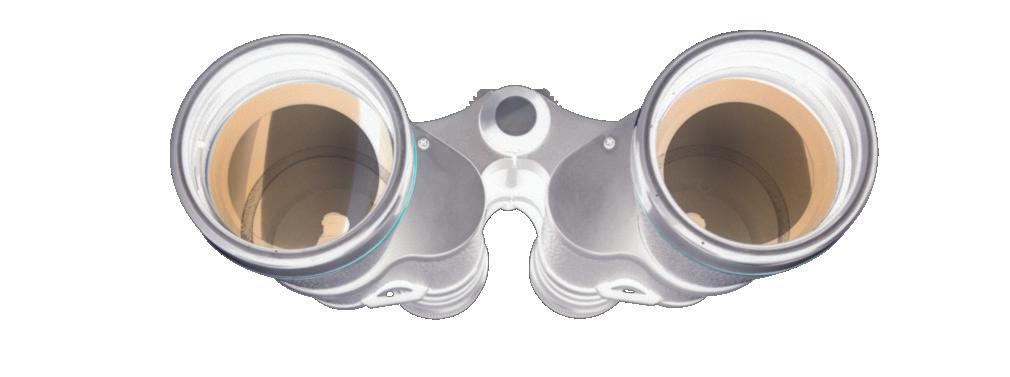
of my mind. The Street felt rich with symbolism: The ‘ironic’ Salomon hiking shoes, the panicky late for my bus power-walk, a woman’s icy stride in front of her assumed partner suggesting that things are tense but not tense enough to cancel plans. Most people seemed to drift from bars, cafes, and restaurants in impenetrable groups. My third storey point-of-view gave me something close to invisibility. While it feels perfectly acceptable to stare at strangers, especially if they can’t see you, I found myself spotting multiple people I knew, and for some reason only then did I feel uncomfortable. Watching someone who you’d otherwise say hi to and make small talk with from your bedroom with COVID, all the while sweating profusely, is a position I’d only put
myself in for the good of peoplewatching.
Pensive musings
When you watch birds and planes, they can’t look at you back, at least not in the same way a human being can. The social complexity and even the uncomfortability may very well be why people watching remains relatively unexplored.
Although we notice all these little things about a person when feel ashamed of it, but we cannot hide from this innately human trait. It seems tragically cliché, but watching people is also a way of watching yourself. If we question our biases, judgement, and critical thinking, it makes us feel challenged. People-
watching with intention and not simply indulging feels less like reality TV and more like a thought-provoking documentary on the real Crown Street, hosted by Louis Theroux. I don’t expect everyone to go through all the tedious formalities, because I certainly didn’t. It’s not even that bad as a time-wasting activity. But just a bit of mindfulness makes the experience all the more wholesome. So go forth budding people-watchers and watch wholesomely!

11
ITEM 1 ITEM 2 ITEM 3 ITEM 4 for looking afar for taking notes for taking notes for setting time goals 1 2 3 4 PULP
Ode to the ceiling fan

Words by Aidan Elwig Pollock
You can feel the slightly wet heat radiating upwards from the grass beneath your pounding running feet. It’s dry, patchy grass, punctuating large tracts of exposed dirt. You gulp from the bubbler, squinting from the
sun and almost choking in between huge rasping breaths. Walking up the stairs to your Year 2 classroom – taking them two at a time with as much force as you can muster – your cheeks prickle, pink hot with a sweat icing brushed by cool-feeling air. As your breath moves through
your rattled-but-now-stable across a sea-anemone, soft but stinging. barbed wire pulled up and down your trachea.
After unceremoniously shoving your lunchbox and broad-brimmed hat (complete with a sopping, half-chewed neck string) into your bag, you burst sweat-soaked into your classroom. A cool darkness envelops you, welcoming your entire being into a sense of desk and pull out a copy of the
Beast Quest book for ‘Drop Everything And Read’ (DEAR), chosen because it had the most awesome creature on the cover.
element that completes this sense of tranquil tiredness on a 33 degree summer day is the soft humming of the ceiling fan, wobbling slightly on its axis to


There are many things that epitomise the early 2000s Australian childhood experience. Bottle-Top Bill and his best friend Corky. Those Smartie ice-blocks

12 CULTURE
with the plastic container of bonus chocolate for a handle. Scholastic book fair catalogues, sent home at the bottom of a school bag. But I think there is one thing that trumps them all — an ultimately sensory object with a sight, sound and sensation that instantly transports me to a world of nostalgic relaxation. The humble ceiling fan.
Yes, that’s right. The ceiling fan. The understated — in fact, overlooked — hero of the Australian household; the saviour of the school classroom on a summer afternoon.
Most university students will be old enough to remember a time before air conditioning was ubiquitous, at least in most homes and public schools. A simpler time, when classrooms
a silky ribbon waving through the air. A time when we could watch a kaleidoscope in beige — sometimes jiggling ominously — above our heads. A time when we could feel the cool tongue
sweat on our arms, a sort of slobberless dog.
Don’t get me wrong. Air conditioning can be very nice indeed. There are not many experiences more transcendent than walking into the white light and cold air of a country-town Coles on a dripping-hot 45 degree day. It’s good for cooling down shopping centres, entirely world (a function of dystopian consumerist psychological manipulation); for linoleum
luxurious white-linen hotel rooms.
But these are sterile spaces cooling device. Where are the elegant sweeping wings of a three-bladed ceiling fan in such
wall corner. Where is the soft, in favour of a dull whooshing hum that often borders on the dreadfully annoying.
What’s more, individual ceiling fans have a character that air-conditioning units could never match. They are devices with personalities. Not only are ceiling fans available in a vast variety of aesthetically attractive designs — from elaborate wooden

accommodation fans, to even bladed public school fan — each and every one carries unique quirks and sensibilities. Some fans wobble slightly to the right in a mesmerising asymmetrical
click loudly, scraping against themselves in an endearing grab for attention. Others drone a pleasing baritone, matching the soothing dimness of the room. What can an air conditioning
Yet nowadays, in classrooms and houses across the country, many ceiling fans sit in sullen silence, overlooked for the easier option of air-conditioning. This is a tragic fate for such beautiful mechanical creatures, many of which not only served us but our parents faithfully on countless hot summer afternoons. One can only imagine the scorn our ceiling fans must feel so harshly;
pirouette. Other fans jiggle violently as if in some frantic dance of death, threatening to launch catastrophically into a classroom full of kids, who make under an execution device. Still more fans have their beige whiteboard markers.
Every fan sings with smile — they know they’re cooling you down, and they
the pain they must carry deep within their once-moving parts at being overlooked, undervalued and unused. Phased out and forgotten.
So next time you walk into a room on a February day, whether at university or at home — don’t immediately reach for the air-conditioning remote. Look instead for that faithful little dial, and give our underappreciated ceiling fans a spin. They deserve it.
13 PULP
Remembering Nookazon: A DIY recipe for disaster
Words by China Meldrum
Like everyone in the conceivable universe during 2020, I caved and bought a Nintendo Switch and a copy of Animal Crossing: New Horizons Marc in Gladesville). With the naive intention of enjoying a low-key and relaxing community simulation, I was shocked to discover that this cottage-core fantasy would turn into a tale of exploitation, cult worship and most surprisingly, potential animal rights violations.
Animal Crossing: New Horizons came out in March 2020, and by June both the US and Australia were recording critical Nintendo Switch
something crazy was happening. A sprawling online community quickly formed and created ‘Nookazon,’ an online item trading marketplace, named by splicing together Tom Nook, the infamous tanuki loan shark, and Amazon, an infamous hell site run by notorious cowboy hat
Nookazon was a clunky little website where people could buy and sell furniture, fruit, and just about any item that could be dropped and picked up again. It connected organic buyers and sellers who maybe just needed one more iron nugget to complete Nook’s Cranny or a
missing piece of Zodiac furniture anteroom, or in my own case, a delightful cafe wallpaper to proudly, and now somewhat service to cottagecore kitsch (remember, it was 2020 after all). But Nookazon quickly transformed into a massive, operating through a website, app, and dedicated discord page — just about living up to its megacorp nomenclature. And many of its users were equally of a megacorp ilk. Sellers weren’t just marketing items they’d incidentally acquired throughout the course of natural gameplay, but rather crafting and purchasing wares with the express intent of merchandising them, often on a scale even Nintendo couldn’t have foreseen. An Animal Crossing entrepreneurial class was emerging, and to understand them, it helps to understand one the Flower Garden Wagon. Dom Hook* reached out to me with a tale of their Nookazon dropshipping empire that amassed millions of bells through this unassuming artisanal amenity.
Despite the Flower Garden Wagon being a fairly easy DIY recipe, Hook brags, “You farm a bunch [of materials] using
motherfuckers for 70,000 bells.” Hook spoke frankly about the insidious world of Nookazon drop-shipping, “Now I’m not a scientist but I don’t think that’s a fair trade. In the span of 2 hours of dedicated playing you can get probably 1 or 2 million bells.”
I never saw the appeal of the Flower Garden Wagon, but I did encounter one such entrepreneur in my Nookazon riddled quest to acquire the aforementioned allimportant Cafe Wallpaper. Once the necessary travel details were exchanged on Discord, I began the long journey to my seller’s dedicated drop-shipping island. this stranger’s mercantile empire, I spied the hostile infrastructure supporting the anthropomorphic capitalism of Animal Crossing’s insidious underworld.
After touching down, a dirt path lined with barbed wire fences kept me, the lowly buyer, at bay. On the other side of these bristling defences was my trading partner. Decked out in a Royal Crown (1.2 million bells), Star Pochette (3000 bells) and Dreamy Dress (2080 bells), they greeted me with bubbled text — less a request than a thinly veiled demand.
“order number <3.”
CULTURE
14
I responded, and then placed my bells on the table. One 99,999 bag at a time. They picked them up, and I waited for my wallpaper. And waited. And waited. But before I could even ask how much longer I would have to wait, the island was closed by the seller and I


island — wallpaper-less and truly shaken to my core.
I never got my million bells back, like countless other innocent victims, but after two weeks my friend caved and gave me the wallpaper out of pity.


Despite my whistleblower, Dom Hook, claiming to have never engaged in malicious behaviour as a seller, there are countless posts on Twitter and Discord detailing doxxing, corruption, and theft that’s rife across the Animal Crossing: New Horizons trading scene. However, this trading scene extends not just to lowly material possessions, but to living, breathing villagers. Animal island companions fetch the highest prices on Nookazon, and for many traders, this lucrative business is one of their most


Despite countless instances of scams, counterfeit images, and straight up lies, many people are drawn by love or, more likely, cold-blooded clout chasing to
this risky enterprise.
Infamous in this blackmarket bonanza is Raymond — species: cat, villager type: smug, star sign: Libra, social clout: immeasurable and potentially
selling him is the golden goose (or cat, in this case), with Raymond going for around 10 million bells and 100 nook miles tickets (an absolutely unhinged price point). Better yet, you can spend real money too! The most pristine Raymond can sell for anywhere from $20 to a whopping $125 on eBay.
One could argue that the surge in trading and trading platforms that followed the release of New Horizons is simply a response to a number of its features. With many of the game’s milestones being dependent on island decoration, along with increased capacity for customisation and terraforming, it isn’t a surprise that people are buying and selling items to take advantage. Combined with an improved online multiplayer, a new villager acquisition system, and the rapidly ascending hypnotic powers of the internet, New Horizons was well equipped and almost destined to create a marketplace like Nookazon to facilitate such exchanges.
In a meandering, slow-paced
game experience like that of the Animal Crossing series, it’s hard to say what the ultimate goal is, because there really are countless ways to play. Despite the end credits rolling with that game can extend for as long as your tolerance for Tom Nook tomfoolery will allow. But I would argue that whether your vision is having the perfect Cyberpunk island, catching every shark, or demolishing the Stalk Market, none of our AC imaginings included DIY mass production, barely concealed extortion, and black market furniture deals: a veritable Animal Crossing Industrial Revolution, complete with dangerous working conditions, and most shockingly, child labour, albeit in a Discord format. Despite previous entries in the series having trading networks, admittedly on a smaller, more decentralised, and friendlier scale, they cannot compare to the unwholesome aspect of Nookazon’s globalised and corporatised underpinning. Despite all of this, Nookazon, whilst having countless ethically questionable moments and eroding a bit of everyone’s humanity in our quest for a 5 star island, truly was a moment of innovation which no one saw coming.
*Names have been changed
PULP
15
Pale blue sky: some aspects of ShamanismMongolian
Words by Stanley Luk
It was once believed that when dusk had settled on the blistered olive of the Mongolian tundra, the decorated each night’s sky — would bestow people with good health and impart, to them, celestial wisdom. The venerated constellation known to us as Pleiades was associated with their heaven. The seven stars of Ursa Major watch over them as the “seven old men”.
There is no concrete theory for why the number nine was the most distinguished above all other numbers. Though we know that Mongolian shamans draped nine colourful strips of cloth, called maitkhuuch of their ceremonial hats and hung along their sashes nine bronze mirrors that clamoured percussively in their ritual dances. (Apprentice shamans were only permitted to hang eight mirrors.) In shaman songs, they would sing of the ninety-nine heavens or skies in the universe: their word for heaven/sky synonymous conceptually with the great heaven/ sky
in the cardinal direction West and
forty-four evil gods who resided in the East.
Each of the ninety-nine skies belonged to their own star. Unusually, the other remaining stars in the sky all belonged to the people alive on the Earth. To a Mongol, when a meteor falls somebody dies because their star had fallen. We infer that meteor showers would signal some massacre or disaster transpiring on a
This belief is rooted in the axiom that human beings and all aspects of the natural world were, and could be, controlled by a spirit’s powers. As such shamans attempted to commune with and determine the wills of the local spirits that resided in great mountains and in special trees. In the rituals they held at those sites, shamans would dance into feverish trances to evoke a magic allowing spirits to enter their body. Their ensuing frenzy was the spirit seizing violent control of the shaman’s mind.
Those special trees inhabited by spirits came to be commonly known as shamaness trees, since ancient Mongolian society had always believed that the land
itself was looked after by mothers and mother-spirits. Early rituals venerating weather phenomena involved wooden totems shaped the morphology of the Mongolian of shamans lends itself to a similar implication. The term for a (male) shaman, boo, is a homophone of their word for wrestler, bokh. It shares the same linguistic root as the Turkish word for ‘sage’ and the Chinese word for ‘divination’. The term for a (female) shamaness, udgan, shares its meaning with ‘womanshaped spirit’, but can also mean ‘beginning’, ‘origin’, and ‘ancestor’. Ancient Mongolian tribes remained matriarchal for comparatively much longer than the rest of the world, and in the court of Genghis Khan, right up until recent history, shamanesses often enjoyed the privilege of greater religious authority compared to their shaman counterparts.
Mongols revered two colours the most: the pale yellow-blue of the sky they lived under, and white. White was the colour of the wandering clouds and also the colour of the moon, but most importantly.it was the
16
CULTURE
colour of milk and the milk products which comprised the main source of their food. Milk had religious was designated for ceremonies for the preparation of dairy products and milk was often scattered in rituals. white. (Apprentice shamans were given a red tambourine.)
Of the Mongolian livestock, all of which provided milk, horses were the most esteemed because of their social and military uses. There are instances of horses being decorated in ribbons and dedicated to a local guardian spirit as their riding animal. Such a horse becomes a living shrine to that spirit and no people could use nor harm that animal.
The Secret History of the Mongols, the Genghis Khan’s life, boldly declares that his destiny was ordained by THE heaven, the greatest spirit associated with Pleiades above. Genghis Khan was the title bestowed to him, Khan meaning ‘lord’ and Genghis believed to mean ‘strong’. Genghis Khan’s horse was white.
There is an episode from the life of Genghis Khan where he believed himself saved by the guardian spirit who resided in the great mountain Burkhan Khaldan. When he was young and still known by his birth name Temüjin adversaries who had ambushed and at the time only, wife Börte. He evaded capture with the help of the old woman Qo’aqchin who hid him in her cart, and he escaped into the boreal forests where he hid for three days and could not be found. When he had descended safely from this mountain, he draped the sash on his hat around his neck; a sign of respect towards heaven; and hung his hat from his arm. Then, beating his chest, he knelt nine times toward the sun. In that moment he resolved to give every morning for the rest of his life and declared that also “the seed of my seed shall know this”. Centuries later the sacred Burkhan Khaldan and its panoramic surrounds is listed as a UNESCO world heritage site. Even today, the ceremonial cairn erected there remains an important site for modern shaman rituals.

PULP 17
Image courtesy of National Palace Museum
The hands that speak
Words by Lameah Nayeem
On a summer night in the mid 2010s, a dancer spins onto a stage. A hurricane of red silk surrounds her. Her coy gaze pans across the audience, bewitching us all with the whiplash of her irises. Language becomes obsolete in a moment like this. The power of the written word is a suspended belief when the human body surpasses its capacity to tell stories.
It was not her face that enraptured me, not her theatrical makeup, nor the tinkling bells that shook above her ankles. It was the hands that carved tales of gods red, accompanied by a blazing circle of that same colour in the centre of her palms. My fascination lay in the transformation of something otherwise unremarkable: a pedestrian curve of the wrist turned her hands into blooming lotuses; a careful bend birds. Such is the artistry embedded within Bharatantyam.
Mudras — intricate hand gestures used by Bharatanatyam dancers — are the soul of classical Indian dance. They are the linguistic apparatus used to convey human expression and symbolic meaning through the dancer’s hands. In the way a magician might wield a sleight of hand for the dramatics, Bharatanatyam dancers wield their hands’ kinetic faculties to connect the realm of the abstract with the dizzying spectacle of performance.
Several ancient texts preside over the art of classical Indian dance. The Natyasatra Bharata (200BCE200CE) is often cited as the genesis of performance studies in India. It lists sixty-six mudras, twenty-four of which are single-handed — named ‘asamyukta’ — and thirteen of which utilise both hands — named ‘samyukta’.
The hands have a uniquely omniscient role, which curiously contrasts with the semiotics of Western dance. In Bharatanatyam, the hands themselves have eyes:
they perceive things, they are the principle narrators of a story, they are eerily self-aware and are able to interpret meaning through movement. They act as their own entities. This is in contrast to Western ballet which inscribes the entire body as the impetus of narrative. Through Western dance forms, we are all human expression and how the skeletal frame tells stories. The pinpointed literature of mudras, in contrast, prescribes primary wrists.
Mudras have multiple meanings, similarly to homonyms, and it is partly the multifaceted nature of performance that makes Bharatanatyam exquisitely impactful.
upright, tightly pressed together without gaps. Depending on context, it may depict an act of blessing, or more organic forces such as the air, sky, or water. The triptaka is similar to folded.
18
CULTURE
PHOTOGRAPHER
Nishta Gupta


TALENT
Prithi Ashok
19 PULP
Figure 1.
Alapadma, often used to symbolise a fully-bloomed lotus. When combined with other movements, it may represent picking fruit or the splashes of falling rain.
Figure 2. A kataka mukha mudra which may represent a bird or woman.


20 PHOTOGRAPHY
Figure 3. A pataka is used to signify a mirror.
Figure 4. A hamsasya mudra is used by both hands to represent putting on an anklet.


21 PULP
Figure 5. A pataka mudra is used in conjunction with a repeated, sweeping alapadma (left hand) to symbolise abundance or giving.
Figure 6. This hand placement depicts garments and clothing. When directly following the mudras in Figure 5, the dancer can articulate Draupadi’s endless sari.
This symbol may portray the king and regalia, whilst also potentially portraying a bindi, or the act of drawing a line.
Bharatanatyam dances translates myths, religious parables, and folklore into physicalised images. ‘The Clothes of Draupadi’, for example, is a popular tale from the Hindu epic, Mahabharata, that tale follows Draupadi, the consort was staked as a bet during a dice game between the brothers and their antagonists, Shakuni and Duryodhana. After Shakuni wins the round of dice, Draupadi is brought to Duryodhana as a slave, and in an attempt to humiliate her before the court, Duryodhana’s younger brother, Dhushasana, attempts to disrobe Draupadi. Draupadi prays to Krishna for protection, and through his divine intervention, Dushasana is unable to disrobe her as the fabric of her sari never lessens:
“Hearing the words of Draupadi, Krishna was deeply moved…the
illustrious Dharma, remaining unseen, covered her with excellent clothes of many hues. And, O monarch as the attire of Draupadi was being dragged, after one was taken off, another of the same kind, appeared covering her. And thus did it continue till many clothes were seen… hundreds upon hundreds of robes of many hues came off Draupadi’s person.”
Bharatanatyam rejects the use of instruments seen in other forms of narrative dance and drama such as props, stage sets, and costumes. Instead, the Bharatanatyam dancer uses their body to illustrate multiple characters and environments, oftentimes simultaneously. Thus, the language of the dance form is inherently complex and polyphonic, though liberal. For a dancer to successfully communicate a narrative, they must exhibit a profound understanding of spirituality:
“[their] body acts as a vehicle to salvation… But there is an inner and subtle quality that creates the fundamental difference between the
expert and the artist. This quality is to achieve the technique and forget it. A truly spiritual artist is one who forgets himself and in that forgetfulness achieves the bliss which is called Ananda.”
Within this ‘bliss’, the observer must understand the conceptual journey being presented. An ideal journey is the product of contrivances ranging from the rhetorical permutations of hands to fanciful facial expressions, all of which replicate the impact of well-paced dialogue or vivid imagery in a novel.
The dramatis personae of a Bharatanatyam performance is extensive. There are the hands, the feet, the eyes, the dress. There is also the spiritual: the things we do not see, but rather experience. Bharatanatyam seeks to comprehend the incomprehensible, to decode the inscriptions of the divine. The ‘bliss’ is shared between the dancer and observer in a communion with the gods as the heavens descend to earth through dance.

22 PHOTOGRAPHY
Figure 7. The suchi (lower hand) and mukula (upper hand) mudras are used to portray Ganesha’s tusks and trunk.

23 PULP
Figure 8. The kataka mukha mudra (top hand) and hamsaya mudra (bottom hand) used to show the Shiva’s head.
The water of life
Words by Ella Avni
A FATHERS LOVE AND SPINACH
I.
The sun stole the colour from my father’s face, love and loss mingled in the blue-black beneath his eyes like rivers winding through the wrinkles of sleepless skin.
I could not curse the sun for what she has done but rather Allah who allowed for this monochromatic man.
as she slept through what seemed like endless summer days he stumbled through each moment and slept in the bed of another. each woman almost the same as the last, all in a desperate attempt to colour his face like she did.
But they can never paint his cheeks like the woman of carob syrup, like my mother.
II.
A woman of copper skin stood in the shadow of my father, through his eyes swooped cloaked love
She had a forgetful name and a face like a brick, in her face I could not see any love!
walking through the door before she did. A bouquet of spinach appeared in my arms “wash them” the nose breathed, no breath of love.
The green mingled with wrinkled hands, a gift from the phoenix. How do I
As I washed with uncertainty and unclear water a woman approached with wisdom and what seemed to be love.
III.
the light fractured. Her hand slipped into mine, the bouquet melting into the grass beneath it, the hand took me to my home which was fractured
A breath of noise pushed its way out of the mouth of copper and rust, “where is the
The hand placed bronze coins in the palm of the monochromatic man, the lustre seemed to further drain his colour.
As the metal rattled the hand constricted, Although I knew not what the rattle meant- I knew my life was now fractured.
LITERATURE 24
THE WATER OF LIFE
The man let loose the rope which tied us tightly to our homeland as we drift. Madhi holds me close as those at the shore weep with their foreheads just touching the sand, asking Allah to say their goodbyes for them. I place my chin on my knees and watch those strangers sitting next to me, what a curious sight!
They glow a sort of yellow hue, elated, I cannot tell if it’s the early dawn light refracting in the dew collected on their baby hairs or a halo forming around their scalp.
Or the water of life has been swallow’d by us who appear to be sailing on it. Exposed toes turn blue with the coolness of the water seeping in Sunken eyes heavy with the memories of where they left from Irises mirroring the glister of the sea as they remember where they are going. Many sleep on deck;
I assume to enjoy the sunrise
Where the sun in her beauty stole what dreams they may have And moulded them into a most beautiful red apparition
Shreds of dialogue peeking out when voices are unlocked from their shackles And stories shared of unlawful or pensive pasts
Followed by reverie and trepidation of what might be to come.
My beloved has gifted us this water of life
This ocean which has the power to create or destroy Yet in it we blindly place our trust to transform what we have once known into opportunity for us to become to take us to Falah.
FRAGMENTED
I dream of my life across the river, each apparition with borrowed faces from photographs of a woman I used to call mother Her hair of dark ringlets and the thickness of her brows her body rounded, soft like the language she speaks Oh mother, my beloved, forgive me
As I wake to the now homely sound of engines and horns
I say “good morning”
not “merhaba”
How dare I commit such a crime
I have robbed myself of my past, my life before falah
What use is translation, is this damnation
How dare I forget the meaning of the very words I was born of.
The taste of carob has not touched my lips since she was here
How dare I purchase such a delicacy with a label in a language other than hers my clumsy tongue stumbling over two dialects tripping over consonants becoming singed when attempting to touch the scripture of gold my knees have scarcely touched the mat of crimson my heart severed from the sacred touch of my beloved.
How dare i, even in my clouded english
to take us to Falah.
PULP 25
A diptych of art and empathy — In conversation with Erin Shiel
Words by Ariana Haghighi
She recounts a frequent episode in her girlhood with a grin. When the house clamoured with demands and stressors and responsibilities, she would slink outside into crisp air. Hoisting herself up onto the top of her house, she’d soar from whatever was down below, and glide into the words of a book, any book. From there, she says, she had a whole view of the world in its clarifying glory. But as she gazed ahead, the corrugated iron roof dug into her hips.
time to think and a view of what felt like the whole world, I had to be uncomfortable.”
Sydney-based poet Erin Shiel’s debut collection, “Girl on a Corrugated Roof”, is forthcoming in June this year with publisher Recent Work Press. The book has been decades in the making. It is a tender assortment of vignettes on girlhood, identity, and the neglected beauty fabric woven on an autobiographical loom. The thread that ties the works together is a phantom presence: a spirit of a girl, who Shiel frames as more inviting than eerie.
book tracks her coming-of-age, as the spirit acquaints herself with the audience. “She has always been in my life”, Shiel shares. She’s unsure whether the spirit is a manifestation of herself, or an imaginary companion, or a symbol of girlhood. Regardless, the spirit provides Shiel with the supernatural compulsion to write.
Much like during her own life, Shiel chases the apparition through the pages of her book. Her mystery becomes Shiel’s frame of reference. She is the foundation for each of the book’s sections, which cleverly delineate an arc of maturation.
Shiel’s poetic domain is wideranging. She masterfully controls territories of girlhood, motherhood and grief, whilst infusing her poems with artistic and emotive commentary. When I ask about her attraction to ekphrastic poetry — poems which detail an artistic
think I am a frustrated visual artist”. I chuckle along, but her poetry is stunningly visual, derived from an artist’s eye. Her work “Ringtail” embodies a moving, lithe possum tail; “Swimmer” visually oscillates like the
pace of paddling.
Shiel has an ardent love for art, but acknowledges its manifold inaccessibility to many people. Particularly, she describes how
inaccessibility of meaning. Plaques aren’t enough, she argues. “Poetry provides an entrance”. Shiel cites poetry’s ambiguity as its best asset and the reason why it triumphs
Its vagueness grants the reader subjectivity, allowing them to forge a personal connection with the art: she remains true to this philosophy in her ekphrastic poems. In her works alluding to art, such as “In Patricia Piccinini’s workshop” , Shiel’s empathetic qualities shine prominently. A trained counsellor, Shiel has a keen eye for observing emotion. She writes of the sculpted mother: “She is the comforter and there are no limits to her love/She is glued to a glowing infant”, an intimate exploration of emotion, a pattern of human nurturing imposed on art.
Shiel’s claim that poetry may provide an entrance to art due to its ambiguity initially confronts me. It is poetry’s ambiguous construction
LITERATURE 26
that sometimes vexes even the most ardent prose reader. But as Shiel illuminates the beauty in inserting your own subjectivity, I am reminded of her corrugated roof motif, where we submit to slightly discomforting things to be gifted with greater clarity — much like how we must stew in the initial unease when faced with a vague poem in order to receive the largesse of literature.
With many female poetic inspirations such as her mentor, Judy Beveridge, Gwen Harwood, Sharon Olds, Dimitra Harvey, Judith Wright, and more, Shiel’s poetry also wrestles with the forces of carefree youth and motherhood’s impacts on identity and creativity.


Shiel speaks of the strongly collaborative nature of modern poetic creation, particularly in female poet circles. She’s been a part of the same poet’s crew — guided by Judith Beveridge — since her Masters at USyd, where colleagues meet frequently, share their work and candidly give feedback. “I see collaboration in the future”, she declares when I ask about the horizon for poetry. In the midst of so many futuristic technological
best way to progress forward is to return to the basic element of human connection. Shiel puts her beliefs into practice — her works embody the ideology of collaboration with peers: in “Put out the light”, she inserts references to Judith Wright’s work to pay homage to female poets whilst simultaneously accentuating their undervalued position in class syllabi. In many poems, such as “Enough fabric to make a dress”, she borrows and embeds lines from her forebears to tie together the plight of women in a parcel of timeless girlhood.
When asked if poetry is facing its demise or on the uprise, I get a knee-jerk reaction. “An upsurge for sure!” she exclaims with reassuring certainty. New avenues of creation such as social media facilitate only more and more poetry, and allow it to be shared with larger and larger audiences. Shiel’s poetry collection itself is a testament to the form’s everlasting freshness. Her compassionate coalescence
a thick slab onto a fast-climbing tower of contemporary poetics — a skyscraping reminder that poetry is closer to its era of birth than death.
PULP
27
Image courtesy of Recent Work Press
Chambers
Words by Sonal Kamble
1.
underneath footbridge. It rained an obscene amount last night. Turned the path into islands. I almost step on the tiny of my policy lecture. The heart hops. Flips over. Water lines tessellate around its veins. There is gravel studded along the arteries, crushed twigs, and a serrated Snickers wrapper corner glued to the side. It looks messy, a little shy. Reminds me of myself after a night out. I dunk it into the pocket of my hoodie and take it home.
I don’t realise it then — the way it moves. But I will.
2.
The heart sleeps in a tank under my bed. It used to belong to my girlfriend’s toad, but I relocated Toadette into a shoebox under my house. I draw the tank out ribbons in the frosted glass, and start rubbing circles into the pocket near the atrium. It’s so raw, so bleached of colour. Frozen in a perpetual blush. “Cute,” I say. I pull away from the muscle. Then it happens all at once.
The smell of fresh iron streams up my nose. The heart pinches into a plum-sized thing, then swells, then rolls through the motions again. And again. It beats. Squelches out a plasmic river. Red coats everything.
“What the fuck.”
It stops.
3. Tuna holds my hand as we walk against the molten 5 PM commuter mass. It’s dark outside. The rain slants with faces. “Piece of shit!” Tuna yells. Every stoplight wants us to drown. She tucks me deeper under her twig-boned umbrella, and the backs of her hands catch all the rain.
“Um.” We walk to the brick stares at my nailbeds. “Are you Crusted into my cuticles and wedged beneath my press-ons, is blood. Fuck.
We’d been getting to know each other that afternoon. I had my buzzcut carpet, and started reading out the Wattpad novel I had written seven years ago. The heart is a bit conservative. It was static the whole time.
The heart shrunk, caught in an
blood and plasma slurped back
“I’m sorry. Taylor Swift.”
“Handwritten letters. Pining. Prejudice.”
was a moment, barely real, where I felt it beat in time with mine.
“Do you want—” Tuna clamps her chin down on the spine of wipes out of her bag. Chin multiplying with every second she strains against the open canopy; she starts cleaning my
“Geez, Tuna!” My heart starts beating in my ears. Something stutters in my chest. A second sound. “Stop being dumb!”
4. Blatella Germanica — the roach’s courtship.
Tuna told me about the way they copulate. It’s a saccharine mating ritual. Watching them


28 LITERATURE
Petit Livre d’amour, Image courtesy of the British Library
on piss-slicked concrete, it’s traumatic. The male unfurls, tucked into his wing. He’s charming. Juicing himself of maltose and maltotriose for a The concrete is so dark. They look slimy in the night.
The cockroach curls over the dampened harmony. Every slant of lamplight resurrects them —
Mars wrappers in the next.
The thudding in my chest turns slippery. It moves like it’s discovering spaces between my ribs and lungs. Ninety minutes.
Tuna said they go for ninety minutes. My heart beats too fast. It swells unlike itself.
5.
It’s Valentine’s Day, Tuna is torn from my neighbour’s garden are being wound up into a purple ribbon.
There must be love behind my computer screen, somewhere beyond the sliced body of the monitor, because the heart is beating relentlessly. Or it must the romance of it all.
When Tuna comes in, she presses a jar full of paper into my chest. “Some reasons why I love you,” she says, but the jar spans the entire length of my torso.
now turned boneless.
“They were a lot more upright when I found them,” I say.
Tuna holds the tank up.
“Um.”
The heart wilts behind the glass, shrivelling until its wrinkles look like fault lines buried deep into
“She’s just — away.”
“In the…. crawl space.”
Tuna’s expression is unnervingly
“…Yeah.”
She’s swift out the door, leaving the weedy bouquet scattered by the doorway. Grabbing the tank, I try to yell after her, but the sound is garbage. Syllables pulped with
bursts into tears.
Toadette was so slimy, so vapid. It’s not a big deal. But Tuna cries into the cardboard like she’s emptying out her viscera.
“It was just a toad,” I say. Then it happens all at once.
My chest caves like it’s gripping partition between my trachea and oesophagus dissolves. My airways squeal shut. I try to gag out a breath, but it’s seized by a throb. My chest is too full. My pulse is layered. A twin beat punching my ribcage.

She laughs, a pretty sound, and
I look behind me. The tank is empty.
29
PULP
Gift of the heart. Image courtesy of Louvre Museum
It’s tee time
Words by Shruti Janakiraman and Ariana Haghighi
“Do you understand what’s accent cuts through the sleepy humidity of an otherwise comfortable Gold Coast morning.
“Do you even know who that
It’s 6am on the G-Line and we are being accosted by a middle aged man. To his credit, he did not appear to be a lecher — standing a safe distance away, in unattractive voluntourism pants, beady eyes narrowed not at Ariana’s chest but at the image printed
on her t-shirt. His tone was conversational, not combative and yet, his interjection into our conversation is no less welcome.

“I bet you have no idea who that is”. He presses on with an ability to be interesting, typical of white men.
Reluctantly we examine the graphic tee for ourselves. It’s a rendering of Sigmund Freud, painted a garish accompanied by a triangular rainbow. The caption reads “Pink Freud”. Is it Freud or Pink Floyd
“He was a great philosopher, you know. I have a philosophy degree too but they probably don’t teach you about him in school. No one knows who he is but it’s funny he’s on t-shirts now.”
Ariana and I look at each other with identical pained expressions, torn between reluctance to engage with this man and the type-A compulsion to correct a statement which is so plainly wrong. Even if we were inclined to explain that Freud was a psychoanalyst not a philosopher, and rather famous one at that, comprehending the real point of the t-shirt, the pun,
30 CULTURE
Katherine Hamnett designs, 1985. Images courtesy of Getty.
was clearly beyond him.
No one understands graphic tees like we do…
Jack Whoppy
Ariana
Amidst drapey patterned fabric and zodiac sign gold necklaces lies a stark sight for any hipster market habitué. As you slowly approach the stall, squares of bright colours gawk back at you like a crowd. You squint to read their outlandish exclamations — “Pugs, not drugs” among one of the most damning. Psychedelic swirls and cartoon characters all wrap you up in an acid trip gone wrong — no, it’s a graphic Tee store.
Graphic tee store Jack at Glebe Markets, and an occasional visitor on Eastern Avenue during a USU market day. It is also a personal favourite of mine, a dreamland from which I draw most of my clothing inspirations.
Jack Whoppy is a graphic
tee store paragon. Each shirt encapsulates the true essence of graphic tees — garishness — despite taking on radically
the Graphic tee is not in the composition of the shirt itself, but rather how it moulds the
the reaction of onlookers.
Take it from me, a seasoned Graphic tee wearer. Each Graphic tee has its own personality, and its own objective — much like us, there is a reason why each Graphic tee was thrust into the world.

On one Jack Whoppy lays a grayscale Marco Polo, his eyes cast to the side. Below him, in uppercase serif font: “Yeah, I pretty much never sit by the pool anymore”. Initially, the nonchalance seems like a wisecrack settles into your mind, you let out a guttural chuckle. The tee weaves a children’s game with a sense of historical esoterism, punching the audience with a hit of nostalgia and appreciation for
sophisticated humour.
Another Jack Whoppy tee that immediately grabs my eye also fuses the past with present, so much so that they collide in a burst of colour and confusion. On the right is a pale pink Galileo, accompanied by the ornate lettering: “Thunderbolt and lightning, very very frightening me”. Much like the Marco Polo tee, this shirt’s merit lies in pop culture reference sparking amusement at its absurdity.
Other Jack Whoppy tees are less layered, but maintain a canonical graphic tee quality of confrontation. Printed on a sickening tie-dye tee is an image of a skull, accompanied by a speech bubble bearing: “I live inside your face.” Apart from being the most colourful memento mori I’ve ever seen, this design is testament to the truth that some of the best graphic tees are devoid of deeper meaning. Rather, they fashion some of life’s simplest facts into a carousel of colour.
31 PULP
Image courtesy of Jack Whoppy
Todd Sampson
Shruti
Yet, despite the high brow esoterism of this medium, the graphic tee phenomenon indie market (as the most vocal purveyors of graphic tees may hope). The humble graphic tee models, mass-produced by fast fashion labels like Forever 21, and championed by every TVpresenter hoping to wear their personality.
No one is more guilty of this than the ABC’s Todd Sampson, known for television marvels such as Gruen and that show where he does weird shit to test his brain. In each role, his messaging is clear: I am fun! I am unusual!
Critical to this branding strategy is Todd’s graphic tee collection. For each episode he chooses or himself designs a pun or some form of cultural commentary to demonstrate his relatability. And it has worked.
rewarded with hundreds of online fans (a high watermark for the ABC), a dedicated Tumblr page, and unnecessarily-detailed analyses of which of his T-Shirts “speak volumes”.
Far from being disdainful, I myself am a Todd Sampson fan. My favourite T-shirt of his features a picture of journalist Laura Tingle, with the caption “you’ve been Tingled.” It’s delightfully nonsensical. It captures the essence of what sets graphic tees apart from other clothing: their ability to
marry whimsy with cultural icons, simultaneously signalling the wearer’s interests and sense of humour — the perfect introduction to their character.
Graphic tees do literally speak for themselves — but you must ask not only what graphic tees can do for you, but what you can do for graphic tees. Analyse them. Celebrate them. Wear them.
32 CULTURE
Images courtesy of https://toddsampsonstshirts.tumblr.com/

National March on Washington for Lesbian and Gay Rights, October 1979. Image couresty of Larry Butler.
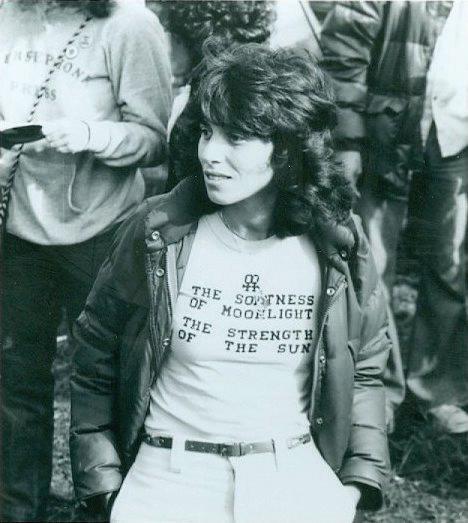
33 PULP
The Coke cans article
Words and photos by Harry Gay
It’s a sweltering summer day, the sun beats its harsh rays on the back of your neck. A trail of sweat slowly creeps down your forehead. The coins your mum gave you heat up in the palm of your hand. The hot concrete burns the bottoms of your feet and you prance about, trying not to stand in one spot for too long.
Finally, far ahead in the distance, you see it. The sun’s refracted beams casting a large object into shadow. A can of Coke, erected via a spike.
A shop awning extends over the length of the footpath to the edges of the street. Coca-Cola and Streets ice cream branding adorn the peripheries of the outpost. Inside, you’re hit with a cool breeze as you make your way through the white tiled aisles of snacks and lollies, lit up by the the knee-height fridges, your eyes scan the assortment of goodies: Maxibons, Cornettos, Cyclones, Paddle Pops, and Bubble O’ Bills. In the end, you settle for the classic Icy Pole.
Outside, the ice block stripped bare quenches your thirst and relieves you of the throbbing pain caused by the heat. These were how my days in adolescence were readily spent. Trips to the local mixed business or corner store, spending my chore money on miscellaneous
sweets and goodies. One such store was the Fisher Road Store, a mixed business located in Dee Why on the Northern Beaches. Whether it be some respite from the rising temperatures brought about by climate change or a last minute box of Ferrero Rocher for Mother’s Day, this mixed business store sold it.
An illusory aspect of the Fisher Road Store, and mixed business stores in general, had always been its decoration. Faded stickers from the 2000s advertising Streets ice cream plastered on the window, cracked and rusted Coca-Cola logos brandished above — these are the common sights of the average mixed business. What was uncommon, however, was the large Coca-Cola can that stood above the awning of this shop. Illuminated at night, this can serves as a beacon of hope for weary night-time travellers looking for a quick bite, last minute ingredients for a late dinner, or a nostalgic reminder of simpler times.
For years, I had never known if there were any more like this in Sydney. My neck became strained after years of looking up at passing shop awnings, hoping to be met with the sight of that glorious Coke can peering back down at me. Instead, I was to taste the bitterness of the worst kind of soft drink: disappointment.
That is, until I was roaming the streets of Lakemba, where I passed by a grocery store on Yangoora Road. Here, I saw the skeletal remains of a Coke sign, exposed without its plastic covering. All that was displayed was the top and bottom outer rings, with faded tan lines of the words “MIXED BUSINESS”. They were tethered together by thin metal beams and attached to the concrete wall of the grey building. My heart was racing, elated at having found yet another store wielding this can.
Looking at Google Street View, intact can used to be above the store, but sometime between July 2013 and June 2016 the sign was stripped naked of its Coke labelling, merely becoming a shell of its once former glory.
Speaking to Lakemba resident, Iqra Saeed, she recalled her younger years frequenting the shop. “We
and pyjamas,” she regaled. “They had these bags of loose candy that reminded me of Roald Dahl’s Boy, where they visited the candy shops.”
When showing her photos of the old Google street view, she found them nostalgic and brought back a swathe of memories.
34 PLACE
cans, I ran into many close calls. For years, Lifeline in Dee Why along Pittwater Road used to feature a large white cylindrical tube hanging above its entrance, although it ended up being made of fabric, and was installed to advertise its previous owner’s business. Images from 2008 illustrate that the location used to advertising “treadmills”, “exercise bikes”, and more. The tube was painted purple and gold, and had the words “BOXING GEAR” lining it.
In Croydon, an aged mixed business and delicatessen on Coronation Parade caught my eye. The shop front displays a fancifully written “MIXED BUSINESS”, bookmarked by Coca-Cola logos. It’s been inactive since 2008, the rusted metal and chipped paint peeling with each passing year. No evidence exists to suggest a Coke can was here, besides two metal clamps right hand side. Perhaps a plastic tube housing wires was attached to the wall via these clamps, and this is where our beverage had been housed.
The closest I got was Booth Street in Annandale, where a chicken shop has a can shaped sign displayed proudly above its awning. The words Lilydale adorn its circumferences. Travelling back
to 2008, we can see the words Pizza used to cover its cylindrical surface, with an Italian restaurant nestled below. The words ‘MIXED BUSINESS’ can be made out on the top and bottom of the can, albeit faded over the years. Unable to go further back on Google Street View than 2008, I can only sit and speculate what once might have been, but I know in my heart that this too was once a Coke can.
Reaching out to others, I was faced with many false leads, dead ends sprouting from every corner (store). That was until a second active Coke can was spotted above a supplements store along Old Canterbury Road bordering Summer Hill and Dulwich Hill. Originally a mixed business in 2007, it was bought out by Supplement Empire in 2013, but the Coke can has remained, a relic of its more humble past.
After this, another can was spotted along Georges River Road in Croydon Park. A take away BBQ joint serving up pide, pizza, kebabs, burgers, and pasta over the years has housed the cylindrical monolith above its doors for more than a decade. While the business has clearly gone through innumerable makeovers and owners – it has remained loyal to the Coca-Cola branding.
The cans that remain hold little insights into their backgrounds. The Fisher Road store has the words “KIMS 5-9” plastered on the top and bottom of the can, while the Lakemba and Dulwich Hill shops feature “MIXED BUSINESS”, and the Croydon Park shop says “TAKE AWAY”.
I took a trip down Fisher Road to ask a few questions. Walking over the store’s threshold, I was hit with the familiar sights, sounds and smells of my childhood. Purchasing an Icy Pole, I interrogated the attendee behind the counter.
“It was made for us by the CocaCola company,” Kate* said. “It’s been with us for nearly 20 years.”
The store was initially named Kim’s, after the owner. Once it was handed down to their younger brother, they renamed the shop to Fisher Road Store, but still kept the original Coke sign.
“It’s too iconic, we can’t get rid of it. It’ll be with us forever.” As I left suckling on my frozen treat, I mulled over the new information I had been given.
If this sign has been around for nearly 20 years, this would suggest a possibility of the Coke cans existing at some point in a

35 PULP



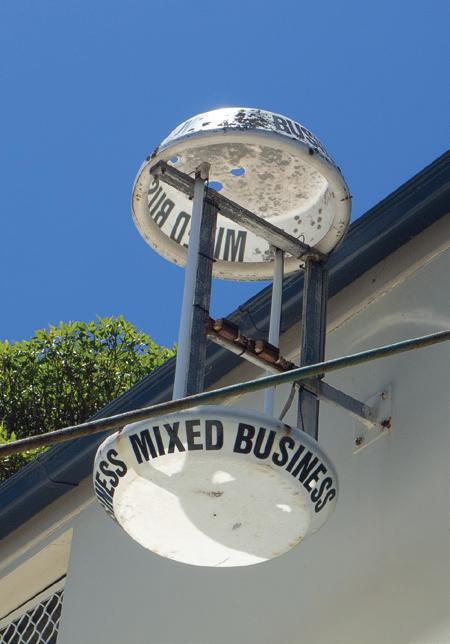
PLACE 36




37 PULP
few of the locations that I suspect might have housed them, predating Google street view. At the same time, it reveals that these are not merely any old signage that they could have purchased, but something made
Coca-Cola and shop awnings have a long and tailored history, with outdoor advertising becoming synonymous with the brand. Coke’s done with painted oilcloth signs placed on pharmacy awnings. In an article from Sign Industry, the author describes the link between the outdoors and Coke.
Naturally a lot of outdoor sign acreage over the years has ballied these themes to a thirsty public. This outdoor advertising has become a signature for the company…in all kinds of shapes and sizes and neon world.
heat, and long stretches of idyllic and picturesque beaches, making outdoor advertising perfect for Coca-Cola’s branding. The height of these cans makes them visible from a distance, their size promising a hearty amount of thirst-quenching goodness on scorching Summer days.
The article asserts that “CocaCola wall signs have come and gone in America ...many becoming “Ghost Signs” by having the signs hidden by new building construction. Many of these signs have inherited a second lease on life as they have been rediscovered.”
Phil Mooney, Coca-Cola archivist, says that:
Nearly a month doesn’t go by where the company hasn’t been contacted by some American community who is tearing down an old painted Coca-Cola wall signs. In almost all cases, the town’s people see this as a part of civic pride to have a Coke sign and want to restore them.
These “ghost signs” can help us understand the state of these Coke signs, as lost remnants of the past. At the same time, they exist as pillars of the community. Much like how the corner store, milk bar and delicatessen have existed as spots
for locals to gather, the Coke sign in spots like Fisher Road have become iconic amongst the residents who frequent its aisles.
The skeletal Coke sign that hangs above the Lakemba grocery store becomes a literal undead entity, a ghost — signifying a past that is no longer present. Similarly, the Dulwich Hill Can remains intact, but the mixed business it used to advertise is no longer alive.
Theories abound as to how and why the Coke cans are gone. For instance, there is the overall decline of the corner store as a lucrative business and community hub. During my exhaustive search for Coke cans, I scoured many mixed business stores and milk bars, many of which have been bought out by their new owners, with any evidence of Coke branding stripped from existence. Such is the case with the Booth Street chicken shop, it’s Coke can painted over once to advertise it’s new allegiance to pizza, before then honouring its new god, Lilydale. Some choose to honour their past, however, with Dulwich Hill’s Supplement Empire respecting their roots.
There is also the overall shift from maximalist, overly loud, colourful designs and shopfronts, in favour of a more stripped back and minimalist feel. At Lakemba, the colourful awning displaying Coke branding and cursive lettering, coupled with the iconic Coca-Cola can, has been stripped bare in favour of the minimalist, grey grocery store sign. The muted colours emphasising its supposed modernity, and the over-the-top display Coke can has no place in a world that takes itself far too seriously.
But the correct answer is usually the simplest, and it’s most likely that these signs are incredibly hard to maintain. Out of reach and inaccessible without ladders, when working in the incredibly time sensitive business of food, these owners don’t have ample opportunities to make sure they are preserved well. I know that during my time at Pizza Hut, our lit up sign that jutted out over the sidewalk was often neglected. Very rarely did we have the time or energy to go clean it and the same is probably true of these Coke cans. Perhaps it was
easier to either let it decay over time like the Lakemba store’s or remove it entirely.
In the years to come, much like the wall adverts described by Phil Mooney, we may uncover many more Coke cans removed from their pedestals. Who knows where they may crop up, or where they’re hiding. Collecting dust in the backrooms of a nearby grocery store or beneath a pile of detritus in an antique store or collector’s warehouse. I just hope when they do crop up somewhere, they are held up as the pillars of the community they so rightly deserve to be crowned.
*Names have been changed
38 PLACE

39 PULP
MARTIN GREGORY and ANTHROPOID Zak Kalivas
As an artist, where I source my inspiration from is always changing. However, I constantly go back to they’ve done and how they did itfollowed by the creatives who came after them and the ongoing “timeline picking’ at elements from the past and producing works that hopefully make a mark in the timeline of ideas while speaking in conversation to its predecessors.
I am obsessed with the extremes: the extreme of glamour, erotica, and of inspiration from the greats of photography like Steven Klein and Nick Knight, and artists of the past like Peter Sato and Pierre Molinier.
I always assumed that my artistic practice would surround itself around conceptual photography. During the pandemic, I was forced to explore ‘human body’ and its relationship with fashion - teaching myself how to use CGI programs like Blender allowed me to really work with the ‘body’ in a way that felt closer to a mason chiselling at stone and altering it in ways without any physical limit. That ideology really often described as a fusion between the erotic and tasteful, fashionable and conceptual. Since then, I have been blending CGI and photo media, as well as working with video art in order to produce my works.

ART 40

41 PULP

ART 42


PULP 43
Sydney will be nice when
Words by Patrick McKenzie
At 5:59pm on August 3 last year, I receive an Instagram message from my friend Laurie a few minutes before we’re due to meet up at Wayward Brewing Co. in Camperdown.
“I’ll chill opposite the pile.”
I reply with several messages in rapid succession: “Excellente”, “V fair”, “Catch ye there”.
Five minutes later I message again.
“My arrival at the big pile is imminent.”

He replies straight away.
“I’ve been admiring it.”
Moments later we’re standing on Pyrmont Bridge Road across from the Big Pile, a ten-or-so-metres-high mountain of miscellaneous excavated material housed inside of a hangar-esque navy coloured shed within one of several dive sites for the latest extension of the infamous WestConnex tunnel.

We ruminate on the Pile drinks, but emerge again later for further observation. With our wits sharpened by overpriced beer, we approach with wonderment.
The Pile is a sight to behold, but only for the keen observer. The shed it exists in is an acoustic enclosure built to reduce noise emanating from the excavation that was occurring within. Hidden away, the Pile scarcely makes itself known to the regular passerby. In fact, you have to stop and squint to be able to make out its silhouette in the distance.
PLACE
44
Images courtesy of State Archives and Records Authority of NSW
obstacle, through which the Pile may only be viewed if the veritable rocks align:
The work day is done and there are no vehicles coming and going to obscure the Pile.
No machinery has been parked in front of the Pile.



The guard-post at Pyrmont Bridge Road is manned and the large sliding doors of the shed have been left open — exposing the Pile; a phenomenon that cannot be relied upon.

On this particular Wednesday, we’re in luck.
“It’s bigger than you think” Laurie says, as we enter a spirited tangent on the origins of the Pile’s name.
As the story goes, he and a mutual friend of ours were on a digestive walk when they came across the Pile.
“We used to do a thing where we get cooked, sort of pick a direction, and then just walk to explore,” Laurie says.
The Pile was introduced to me in conversation several weeks later, and as a resident of the area, my interest piqued and a visit was planned with haste.
Builder by day and Pile enthusiast by night, Laurie claims to be something of an expert. In an incisive moment of observation, he tells me that the time he saw it; bigger, Pile-er.
“I see a lot of these kinds of piles at work, and [the Pile] looks like it’s been put there recently. As you can see, next to colour,” he says.
“They’re setting up. I think they’re making something out of the pile, and they’re just laying down their ingredients.”
As I would discover several months later, this wasn’t entirely untrue, but in that moment, the Pile remained confounding.
“Do you want to go look at reference to the large ventilation tubesat the opposite corner of the site.
45 PULP
We proceed to circumnavigate the dive site to the Parramatta Road side,
the shed along this path. A small complex of demountable rooms — stacked about four high and six deep — soar into the sky, we observe another entry gate and guard post, some vending machines, and a few parking
the Big Pipes.
“I never take the time to really observe these areas, even though they’re a block from my place,” I say.
“I so rarely explore these areas that when I do go out of the house, I almost have to,” Laurie agrees.
***
Although my relationship with the Big Pile was still nascent, my existence in the locale predated it by several years. Relocating to the area from Forest Lodge in early 2019, my Mum, brother, and I settled in across the road when the dive site was merely a hole in the ground.

The construction site immediately became a constant in my life. I would see it every morning when walking to the bus stop and it would be exactly the same when I came home

documents from as far back as May 2019 show that work was conducted 24/7.
three stages of the mammoth motorway project, which was
It later became known as ‘M4M8 Extension’; eight kilometres
PLACE
46
opened on January 20.
Although it’s an ambitious infrastructure project, WestConnex has been equally known for ardent community opposition. Despite bi-partisan party support at the state level, Sydney’s independent local government and various community organisations have opposed its various stages on multiple grounds.
Since 2017, local outlets like City Hub have reported on a lack of transparency and consultation surrounding the placement of the dive site. Last year,
exploring the potential for a class action lawsuit against the NSW Government and its contractors on behalf of residents across the Inner West, who claim that tunnelling vibrations and changes in soil moisture have resulted in property damage.
While I grew strangely fond of the Big Pile, the Pipes, and this ecosystem of a dive site, I always wondered what would come after it. Would it become
of Sydney’s multivariate construction projects is maddening at best.
For every WestConnex stage that is completed, a Frankie’s Pizza By The Slice is razed in the name of a ‘We’re Building Tomorrow’s Sydney’ marquee and an eventual Metro Station. An apt amount of NIMBY-ish Sydney Morning Herald pieces are published, tech giant Atlassian begins a $1.4 billion construction project at Central station, and the cycle repeats itself.
***
Such was my fascination with the Big Pile; enough to attend a ‘Construction Site Bump Out Info Drop-In Session’ on October 13 last year, accompanied by my Mum and a friend, to hear about the impending end of the project.
At 3pm on a Thursday, we made our way to Malt Shovel Brewery — adjacent to the dive site — eager to hear about how the much-anticipated deconstruction of the dive site would progress over the coming months. After trying two entrances and waiting several minutes, we were met
underground legions of derelict Parramatta road shop owners transform it into a bead and/
In Sydney, construction often leads to further construction. When houses are acquired and demolished, a multi-year building process commences. The eventual ending is just beginning, and to undertake a comprehensive account
47 PULP
Construction and Trading arm of Samsung, one of the current contractors on the project. The three of us were the only community members who had come to the consultation.
Surrounded by large stainless steel vats of beer and with the smell of hops lingering in the moist air, we were seated across from two contractors and one of the current head engineers. We were encouraged to ask anything and everything the project.
My friend probed, “Were there any funny or memorable moments from the project that could speak to the overall tone
One of the head engineers project obligingly told us that no particular memories sprung to mind, but that the Krispy Kreme 7-Eleven petrol station were a favourite among the workers.

Buoyed by fond memories of the Big Pile, I asked what would become of the excavated material. With a glint in his eye,
the engineer told me that tens of thousands of material, would be used in the construction of the new Western Sydney International Airport in Badgerys Creek, a practice common in the

We left the session entire site levelled — weather permitting — ideally by early 2023, but with one question left unanswered: What would
We were told it was yet to be determined; even as to whether the land would be retained in public ownership. Though the NSW government is yet to announce any plans, Inner West Council minutes from June 2022 indicate a unanimous desire among local councillors for the land to be “secured for biotechnology and advanced manufacturing uses in the innovation sector to contribute to the economic outputs of the Camperdown health and education innovation precinct of Tech Central”.
In mid-December, the same friend who accompanied
me to the community dropin was one of 2000 people to attend a ‘walk-through’ of the new tunnel section — I had sadly missed out on tickets. However, he recounted the day trip: Attendees were minibussed into the tunnel from St WestConnex merchandise and snacks including pizza, gelato, and cookies with dumptrucks on them. A story about my grandmother came to mind.
After having moved from New York to Sydney in the early 1960s for my grandfather’s work as a civil engineer installing air conditioning in the then-brand new AMP Building in Circular Quay, she observed the skyline, Dotted with construction particular: “Sydney will be nice when
In the absence of Big Piles, at least there’ll be cookies in the meantime.

PLACE
48

49 PULP
WestConnex merchandise, images courtesy of Marlow Hurst.
The Devils in the details: The outrageous story behind Space Jam: A New Legacy’s most bizarre cameo
Words by Jim Bradshaw
51 years after its release, The Devils remains Warner Bros.’ dirty little secret, so how did one of its characters end up in a Looney Toons movie?
Space Jam: A New Legacy (2021) is, to put it rather crudely, a dick-measuring contest; more an expensive slide-show of the Warner Bros. (WB) back catalogue than a movie in its own right, and no its climactic basketball match. After all, it wouldn’t be a Space Jam sequel without one.
At multiple moments throughout the game, Don Cheadle’s Al G. Rhythm is accompanied court-side
Pennywise the clown, an agent from The Matrix, the cast of The Wizard of Oz, a few Batman villains, even the droogs from A Clockwork Orange show up for a malenky bit of PGrated ultra-violence. WB sure owns a lot of shit, and boy do they want
everyone to know it. But what about the nun who seems to be in every
What if I told you the true story behind this cameo is somehow weirder and more fascinating than
You see, this is no ordinary nun. It just happens to be a character from an infamously unholy occult-classic known simply as The Devils (1971): a that funded it still refuses for it to theatres.
In the late 1960s, divisive British
Huxley’s The Devils of Loudun for WB, which had itself been adapted for the stage a few years prior. The
so-called ‘possessions of Loudun’ that occurred in France throughout the 1630s. It’s a mind-boggling story that combines one promiscuous
priest, 17 sexually hysterical Ursuline nuns, demonic bewitchments, public exorcisms, archaic torture methods, a holy war, and the plague, all culminating in a witch trial and burning at the stake.
Given Russell’s track record of boundary pushing and the grisly nature of the source material, it’s no surprise that WB were utterly
were delivered, prompting extensive edits by both studio executives and censors. Two entire sequences were cut completely, and countless smaller edits were also made. In essence, The Devils was sent out to die; branded with an X-rating in both the U.S. and UK that destined it for
Regardless of the headlines and controversies it caused at the time, it didn’t stay in the mainstream eye for long, and has unfortunately never managed to become much of a household name.
50 FILM
In the years since its initial release, The Devils has seldom been seen, due mostly to how unavailable WB has made it. It appeared on VHS three-times throughout the ‘80s and ‘90s — even more heavily censored than in theatres — and on DVD a grand total of once, by the British Film Institute in 2012. It has been available to stream only twice — once through Shudder and once through Criterion — and available for rental for a mere three days, after which time it disappeared from the iTunes store without explanation. From what I can gather, almost 100% of illegal streams online are of the fan edit that attempted to ‘un-censor’ the the making-of documentary, Hell on Earth (2002).

Perhaps with the exception of Disney’s embarrassingly racist Song of the South (1946), I honestly history that has been suppressed as much as The Devils; not by censors

51 PULP



52 FILM



53 PULP
or religious lobbyists, but by the
way to watch the movie outside of the British DVD, itself the result of a decade-long attempt to break through WB’s gridlock that still ended up being censored. You can’t stream regardless of whether you have a VPN, and despite a full restoration of the director’s cut being completed 20-years ago, WB have outright refused to release it.
So what made The Devils notorious sequence dubbed ‘The Rape of Christ’, in which a group of of Jesus. Or the scene involving Vanessa Redgrave, a disembodied femur, and a place where the sun
provocative, with gruesome depictions of torture, stomachchurning plague-remedies, and a few erotically charged exorcisms thrown in for good measure. There are hornets, crocodiles, giant syringes, boiling liquids, needles, mallets, and not going to claim that The Devils is tame — even by today’s standards it can be a tough sit — but I can’t say it comes close to a lot of what we’re accustomed to in the golden age of arthouse horror. The answer as to why The Devils copped what it did lies solely in one thing: the religious element.
The Devils is by its very nature aggressively iconoclastic. It holds no sanctity towards religious institutions and consistently uses what many would consider blasphemy to get its point across. In a 1973 television interview on Parkinson, Oliver Reed, anybody proper niceties, any proper little entertainments, little asides before tea. We were showing them the bigotry that goes on or that humanity is capable of.”
In a tribute to Russell posted to YouTube following his death in 2011, The Devils marriage between church and state,” one that renders uncomfortable truths about divine power in the hands of men with an unnerving ferocity. Today, its commentary on
fear and hysteria being weaponised against a population feels shockingly religious fanaticism in quite as disturbing a way. Indeed, The Devils still feels dangerous, regardless of its camp aesthetics and outdated you happened upon by accident in the middle of the night and probably shouldn’t be watching.
If The Devils were to have been released uncut in 1971, all hell would have broken loose. You can just imagine the types of deranged lobbyists showing up in droves to condemn it, which is all very ironic considering its central themes. But still the question remains: why is it been over half-a-century. It’s hard to imagine anybody batting an eyelid were a company like Criterion to most people wouldn’t even realise, given how niche the market for it is.
The Devils
are no rarity. In 2021, Paul Verhoeven directed and co-wrote Benedetta, a during the bubonic plague that received widespread acclaim. The Devils is, simply put, the unfortunate result of a combination of internal politics and being at the wrong place at the wrong time. Perhaps WB’s new merger with Discovery comes with a silver lining; a new team of department heads and executives may result in the next appeal to but I’m not hopeful. WB have taken that backing out now would probably make them look a little silly.
For now, all we can do is embrace the fact that Space Jam: A New Legacy has somehow reignited a conversation on censorship that has stretched on for over half-acentury, which is every bit as absurd as the story behind Ken Russell’s unsanctimonious sleeper classic itself.
54
FILM


55 PULP
As a visual artist, I’ve been working closely with sound artist AnSo over the past year. This is a collection of work
Our collaborative single, ‘Mollah ( )’, intertwines the traditional Korean card game ‘go-stop ( )’ that uses ‘hwatu ( )’ cards and translation of Korean names into Chinese characters. ‘It’s Myself that I Crave’ utilises a 16mm Bolex camera, capturing portraits of AnSo. Self portraitures express our creative and romantic partnership and journey and the way it mingles with our identities as queer and POC couple.


Yoon
PHOTOGRAPHER Estelle
TALENT AnSo
56 PHOTOGRAPHY
MOLLAH





57 PULP

58 PHOTOGRAPHY

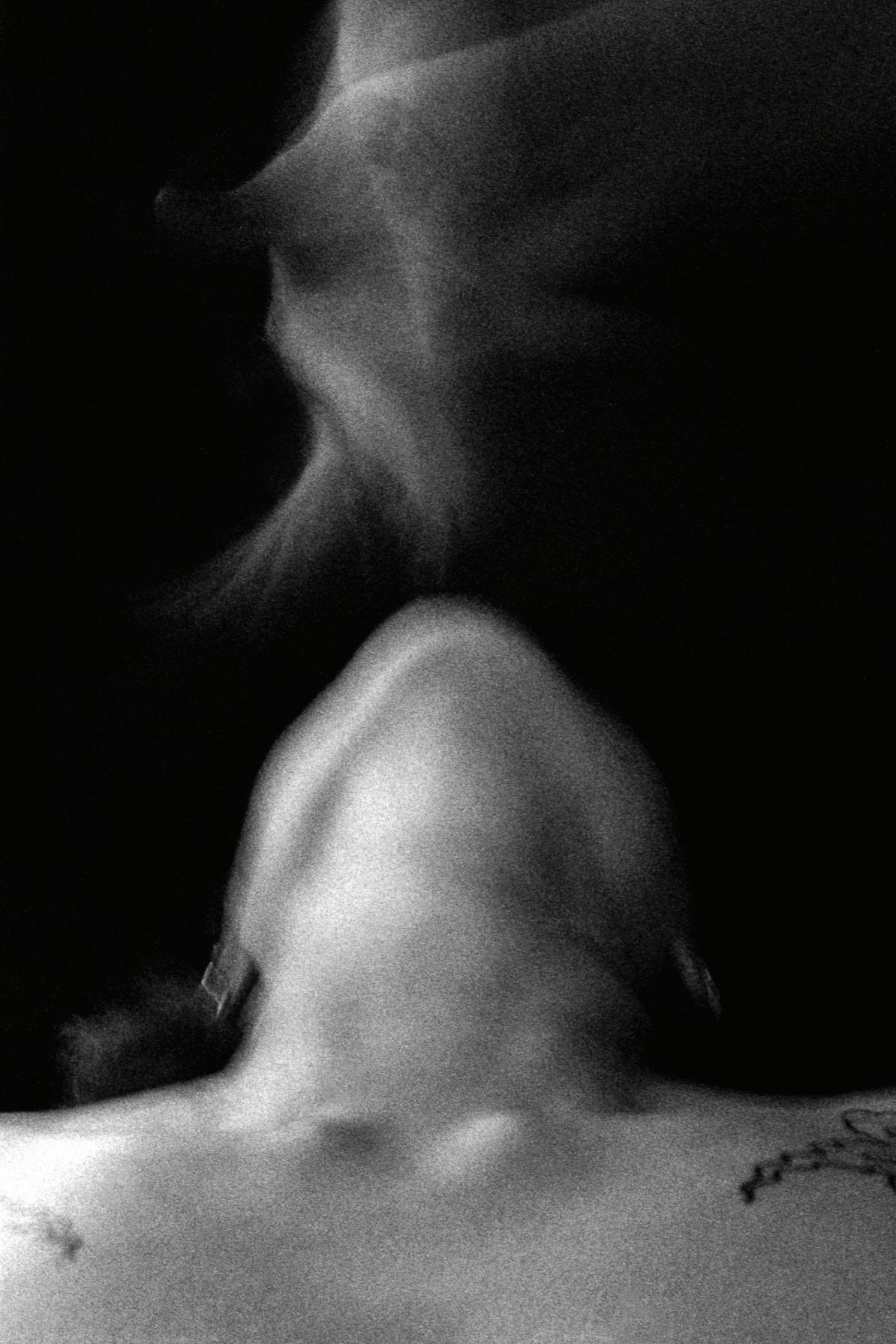
59 PULP
IT’S MYSELF THAT I CRAVE

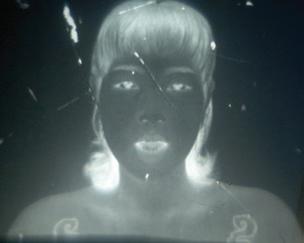





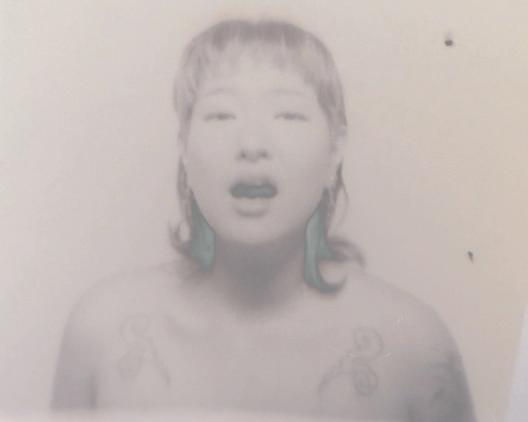






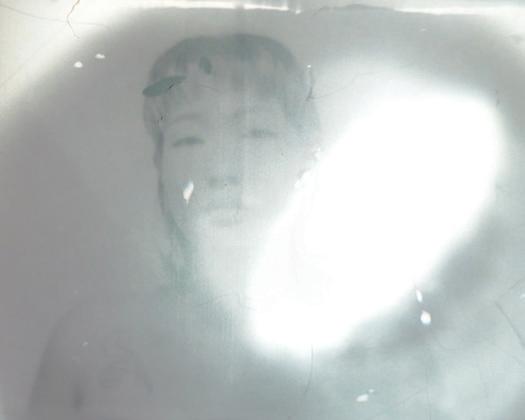

60 PHOTOGRAPHY





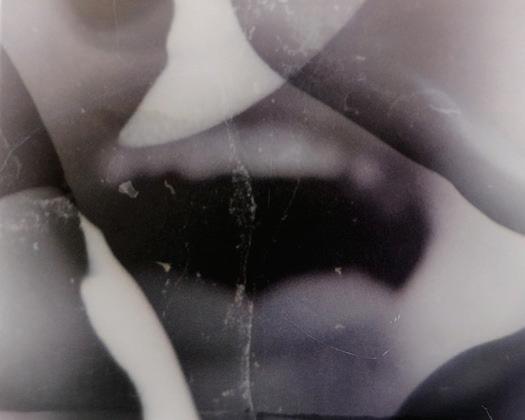









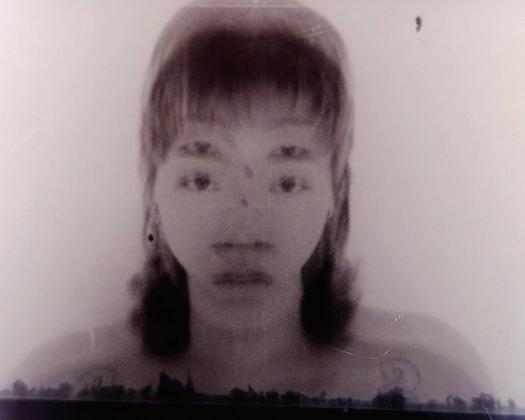
61 PULP
MSG for me and you
Words
by Nandini Dhir
Why does two minute Mie Goreng taste better than a bowl of rice and freshly sauteed noodles in oil and powder from a plastic sachet, more than fresh
The answer; monosodium glutamate, or more commonly referred to as MSG.
YouTuber and Internet personality Uncle Roger, portrayed by Nigel Ng, surfaced to fame when he criticised an egg-fried rice tutorial by the BBC. Drawing on traits stereotypical of Asian parents — using day-old rice and a wok over a gas stove — Uncle Roger generation migrants. More importantly, he declared his love for MSG.
This restarted the controversy surrounding MSG and its questioned adverse health
However, this mouth-watering seasoning is the missing answer to many food crises.
I have always noticed MSG in my pantry, something my mum would sprinkle into her
Indonesian cooking, from nasi goreng to Mie Goreng. Growing up, MSG was just ‘Sasa realise that the eminent white powder was attaining a bad rap for being a chemical additive, I thought to myself, “Bullshit, I was raised on this!”
extracted from seaweed in 1908 by Kikunae Ikeda, a Japanese
enhancing power. MSG is now derived largely from fermented corn starch, sugar cane and cassava starch, and is found in produce such as mushrooms, tomato and cheese.
The umami taste that MSG that goes beyond saltiness; it is synonymous with meat and protein. MSG has therefore become popular in vegetarian cooking, used to enhance dishes without salt, but with the umami meat.
additive, with Food Standards Australia New Zealand (FSANZ) classifying it as an “added glutamate”, despite being an
identical chemical to “natural occurring glutamate” found in fresh produce. This chemical and many consumers feel the need to eliminate MSG from their diet.
Some early health scaremongering and subsequent bad press didn’t do it any favours either. In 1968, Robert Ho Man Kwok wrote a letter to the editor of a medical journal where he described how he “experienced a strange syndrome whenever I have eaten out in a Chinese restaurant.”
The “syndrome” consisted of numbness at the back of the neck, general weakness, and palpitation (among other symptoms). One of Dr Ho Man Kwok’s possible explanations for this was MSG. Baseless and anecdotal though it was, his letter would go on to create a media frenzy around the glutamate seasoning and ‘MSG Symptom Complex’ was coined in its wake.
In the decades following Robert Ho Man Kwok’s letter, this mouth watering powder has undeservingly become associated with unnatural and
OPINION 62
inorganic additives, such as sweeteners. My concern is that people are depriving themselves of the savoury tingle, salivating aroma, and salted heaven of MSG that elevates any dish.

A number of health blogs and nutrition organisations have continued the work of Ho Man Kwok, perpetuating the misconception that MSG is a contributing factor to increased stress levels and anxiety diagnoses. Websites like the Integrative Clinical Nutrition Blog advise “to remove all forms of MSG from your cupboards,” to arguably prevent the growing namely anxiety and depression. Various research papers have contradicted such claims and highlight that there are no clear or consistent links between the ‘MSG Symptom Complex’. To that end, FSANZ states that “MSG is considered safe and is an authorised food additive...” but also recognises that, “A small number of people may experience a mild hypersensitivity-type reaction to large amounts of MSG... These

PULP 63
Sydney launchesLibrary ‘Dark Web
4 Seniors’ to bridge digital skills gap
Words by Margaret Pearson
Move over youngsters — there’s a new group of computer whizzes on the block.
After a successful month-long trial run, Randwick West Library is launching its new ‘Dark Web 4 Seniors’ program to the public. Every Thursday at 11am, seniors aged 60 and over are invited to learn the ins and outs of the internet’s most dangerous and unregulated corners in the name of inclusion and independence.

the brainchild of Gavriela Princip, the new Director of Learning at Randwick West Library. “Our focus groups indicated that
generation, Baby Boomers were the least digitally engaged of our entire population,” Gavriela told PULP in an interview. “In a world where so many services are now delivered digitally, we cannot behind. It should be just as
easy for seniors to renew their license, share extremist content, or procure a hired gun as it is for anyone else.”
Before enrolling in the program, to access Government Services as an 83 year old. “Illegally, that is. I’ve found their systems are much more secure than they were 30 years ago, meaning it’s gotten harder and harder their websites.” Under Gavriela’s
64 COMEDY
supervision, Jill acquired a remote access trojan from a darknet marketplace and gained unauthorized access to the personal information of thousands of residents in her local council’s database.
“Thanks to Gavriela’s training, I’ve never felt more independent. For one thing, my son will be pleased I don’t have to call him whenever I feel like holding an under-resourced hospital to ransom.”
“When my grandson Steven told me about his cryptocurrency investments, I didn’t quite get it,” recalled Gary, a 76 year old from Bellevue Hill. “I thought it was just another young person thing — too complex for someone of my generation to understand.”
It wasn’t until the second week of DW4S that Gary had his ‘Aha’ moment, telling PULP “when I saw Gavriela show just how easy it was to pay for ecstasy from the Netherlands with Monero, it all began to click. I started to realize just how transformative a technology like this could be.”
‘Dark Web 4 Seniors’ is the latest in a pipeline of new community training programs the library stewardship. Other programs include ‘MAKE!’, a two-week long school holiday course where high school students learn Computer-Aided-Design software to manufacture 3D
‘SPEED and Sip’, where middleaged singles are encouraged to come along and exchange pleasantries while manufacturing amphetamines in the library’s basement.
65 PULP
by Harry Gay

A zine within a -zine
66 COMEDY


67 PULP
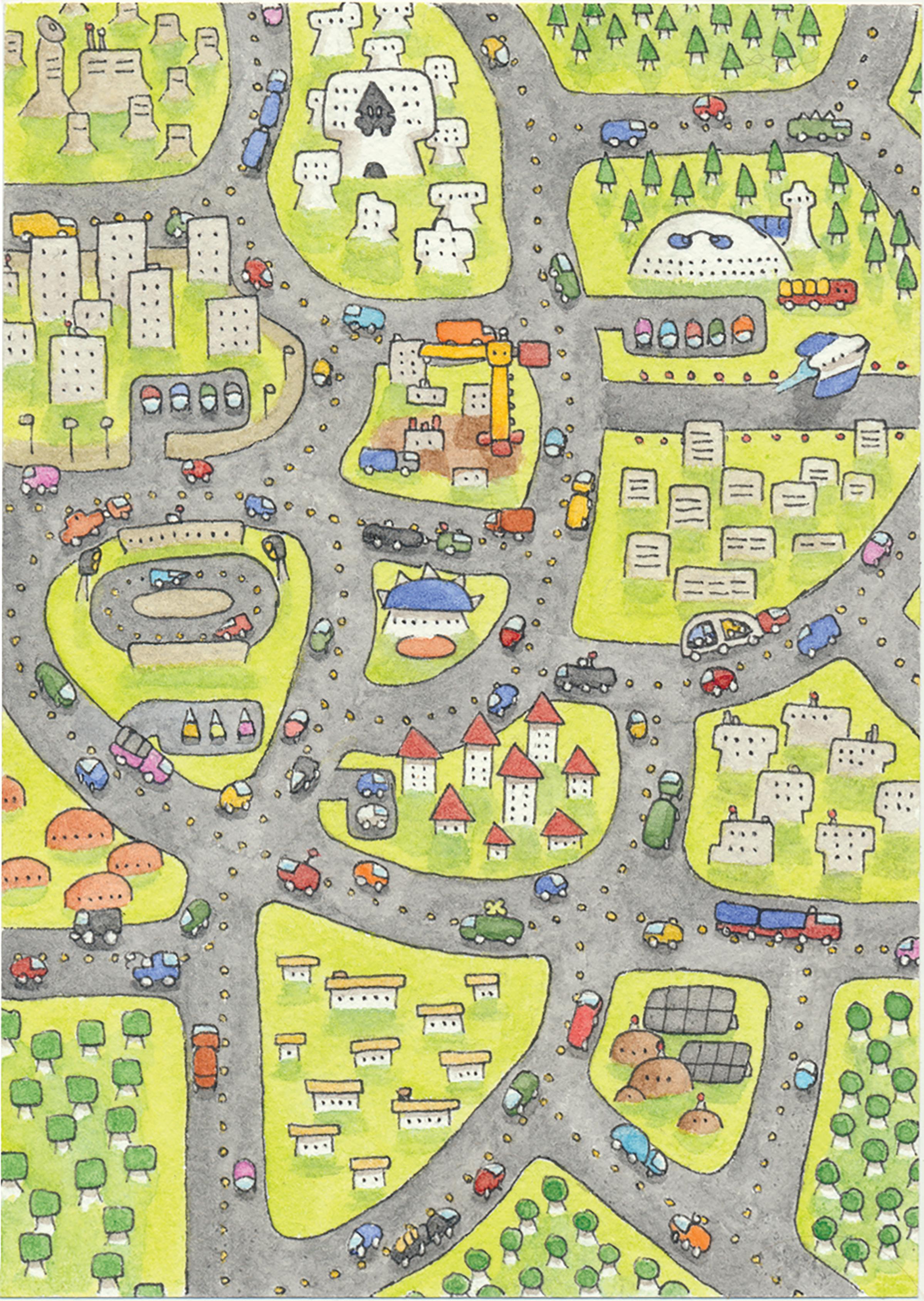
68 ART
3vergard
Art by Marcus Langdale

Lost promises of an information-age childhood into a universe previously seen only in glimpses.



69 PULP
The world I call 3vergard (pronounced ever guard) is a culmination of years of art practice through my childhood and teenage years. I have been an obsessive art-maker all my life, creating concept art, catalogues, lorebooks, comics, and so on, all inhabiting an ecosystem of imaginary franchises.

3vergard was born as digital art but moving into handdrawing and watercolour really deepened my scope for personal expression. Over the


past year I’ve been expanding 3vergard into a musical project, scavenging the sounds of early hone in on the nostalgic yet otherworldly quality of my work. Starting 3vergard turned art from an exercise in product-making into a way to reconnect with my inner child and give new life to all the abandoned worlds of childhood. While childhood memories certainly shape the visual language of the 3vergard world, it’s taken on a life of its own, and now I see reminders
of it everywhere. It embodies a sense of childlike wonder and love for the world (both natural and built) that I think is necessary in lighting the way to a better future, a future beyond capitalism and climate crisis.

70 ART
My upcoming book 3VERLAND is an in-depth exploration of the behind each little windowpane that my previous paintings have given. It’s been a big undertaking and has taken nearly ten months for pencilling alone, yet to be inked or painted. However, I think it will be well worth the wait.

71 PULP


E D I T O R 2 0 32 4
you passionate
you go Does art
want YOU to be the next editor of PULP magazine! 72
Are
Do
We



C O T A L L UEmail us at pulp@usu.edu.au if you have any questions. or would like advice. Follow our socials @pulp.usu to stay in the loop on PULP’s 2023-2024 editor recruitment process. Scan the QR code expression of interest! 73
MARCUS LANGDALE Enjoyer of whimsy and painter ‘of little guys @3vergard
SONAL KAMBLE
CHINA MELDRUM
On a mission to get scurvy before 21 @china.thecountry
STANLEY LUK Addicted to being @stanley_luk_
LAMEAH NAYEEM
The lactose intolerant, starcrossed lover of all things dairy @30nay.la
JOE FIDLER Observer and commentator of nothing in particular. Writer of big words and of little consequence
@tarocash_dripp
MARGARET PEARSON
ZAK KALIVAS
Known for his fashion based photography, video art and 3D Art - experimenting with blending photo media and CGI @zakkalivas
SHRUTI JANAKIRAMAN
Plant mum, lawyer*, sometimes writer. * not legally x @zimpaholic
NISHTA GUPTA
Third year artist and BeReal fanatic @nishtaguptaart
AIDAN ELWIG POLLOCK
History nerd but not in a gross way @marcell__toing
JIM BRADSHAW
Once wrestled a bear with my bare hands and won on a points decision
@jim_e_brad
ELLA AVNI
Connecting her family’s disconnection and displacement through a collection of ghazals and prose. Swim the water of life with her @Ellaouavni
ESTELLE YOON Korean-Australian photographer and actor, currently based on Gadigal land @estelleyoon
ANSO A self-described sculptor of sound existing and creating on Gadigal land @an.so.ie
CONTRIBUTORS




























































































































































































































